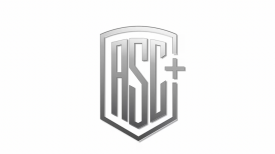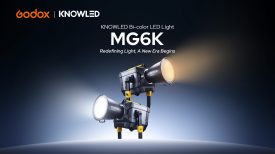
The Aputure LS-mini20 d is a low cost, compact LED fresnel light which uses just 25 watts of power. There is a myriad of compact LED fresnel lights on the market, so how does the LS-mini20 d stack up? Well, let’s find out.
Can you judge a book by its cover?
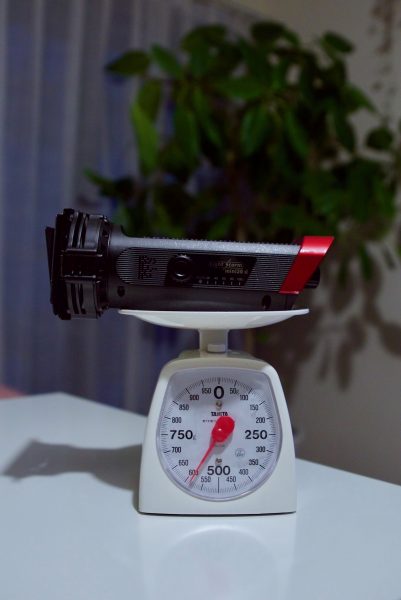
The first thing that strikes you is how light the LS-mini20 d is. Aputure doesn’t give any weight specifications, but I was curious, so I got out the kitchen scales. The light weighed in at 680g (23.98oz) which is lighter than some small sized sodas served at American movie theatres.
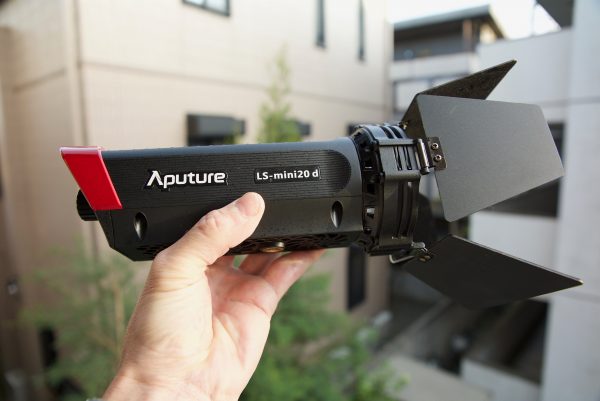
The downside of it being so lightweight is that the LS-mini20 d does feel a little on the “cheap” side when it comes to build quality. To be fair to Aputure, at $234.00 USD, I wouldn’t expect it to feel solidly made. In all honesty, the build quality doesn’t leave me with confidence that the light will still be working well after a few years in the field. This is pure speculation on my part of course, as there is no real way of telling unless I somehow manage to jump into DeLorean and go back to the future.
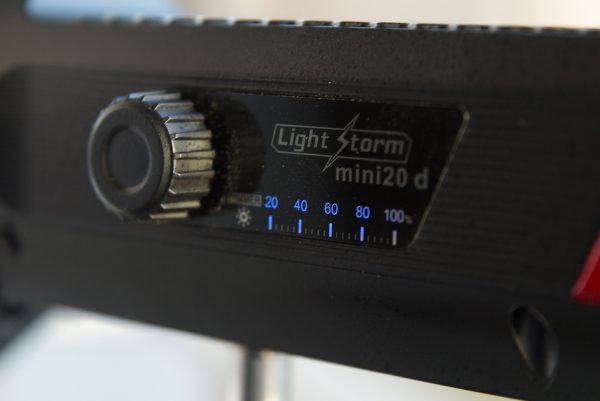
The light may be no frills, but it is still functional and the layout of the controls make it simple to use. The LS-mini20 d has an on/off button, dimmer dial, and a spot/flood dial. These are all easy enough to use, but the LED indicators that tell you the output and spot/flood position are a little vague. You can never really quite tell what level or beam angle you are at as the gaps between the LED numbers is quite big. For example, the brightness output has measurements of 20, 40, 60, 80 and 100 on the side of the fixture, but you get no indication of what output you are on if you are anywhere between those numbers. I may be making a mountain out of a molehill, but this was certainly something that I found slightly annoying.
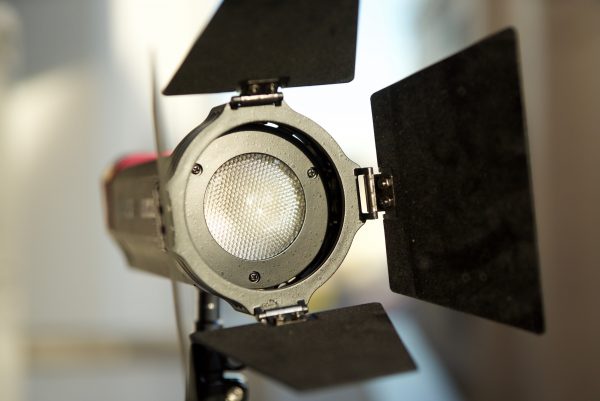
Surprisingly despite the less than robust build quality, the barn doors are actually really well made and solid. They have a soft felt material on the inside which means they don’t scratch and rattle around when you have them closed up for transport. The barn doors can be rotated 360 degrees and offer a good level of control and light shaping, however, they can’t be removed from the fixture.
What the? 7500K out of the box
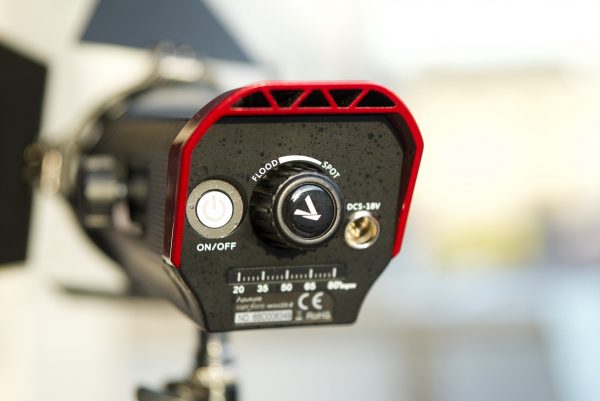
In what can only be described as a strange move on the part of Aputure, the LS-mini20 d has a kelvin colour temperature of 7500K (+/-300K). Off the top of my head, I can’t think of any other light that comes as a 7500K fixture. Calling it a daylight fixture as denoted by the “d” in its name is a bit of a stretch. In a market where 5600K fixtures are the norm, it’s hard to understand why this fixture bucks the trend.
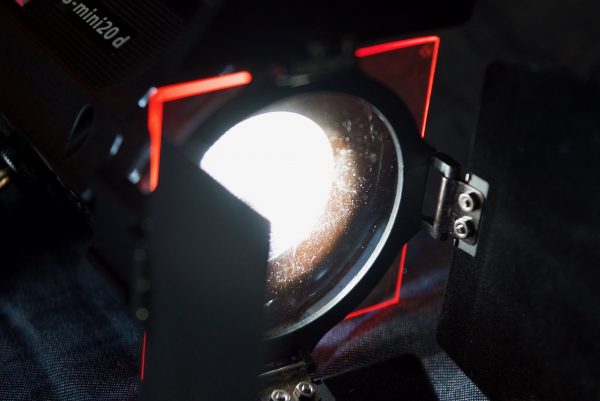
Aputure does include a 5500K filter that gets the lights kelvin colour temperature back to a standard 5600K source, but it does so at the expense of both output and a slight drop off in colour rendition. In some ways, you have to wonder why they didn’t just make a 5600K fixture and put in a 7500K filter.
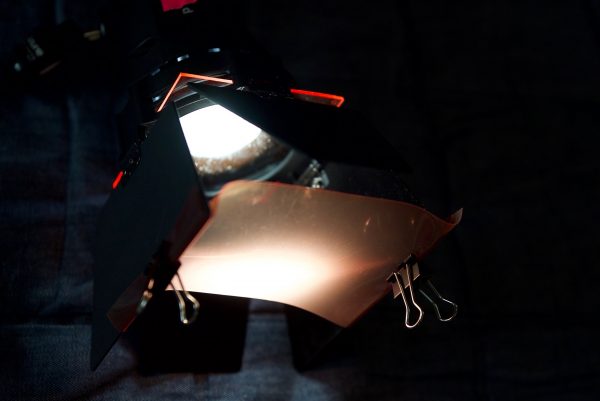
The light also comes with a 3200K filter that you can use if you want to replicate a tungsten source, but again, just like with the 5500K filter you will suffer a loss of output. I found that if I used the 5500K and the 3200K filter I got a Kelvin colour temperature reading of 3990K. If you just use the 3200K filter you get a Kelvin colour temperature of 4841K.
Fresnel spot/flood range
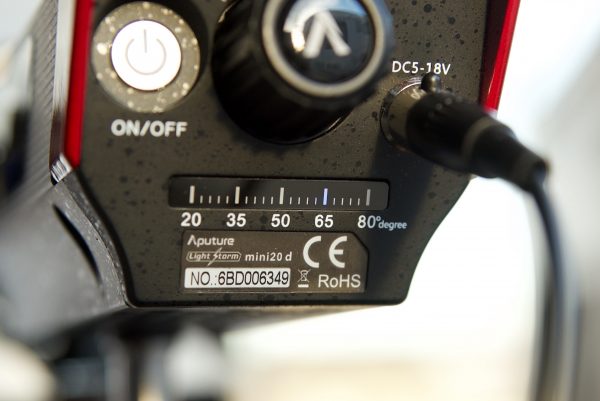
The LS-mini20 d has a reasonable 20-80 degree range which gives the light a fair amount of versatility. As a comparison, the similarly priced CAME-TV Boltzen 30W fresnel LED has a 15-60 degree angle. I found the beam angle on the Aputure to be pretty good, and even though I could only spot the light up to 20 degrees I was still able to use the barn doors to create small slithers of light.
More power options than you can poke a stick at
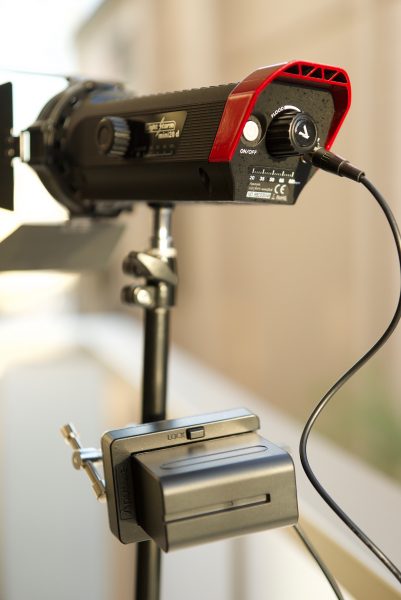
The whole philosophy behind the LS-mini20 d is its flexibility and versatility and it certainly ticks that box when it comes to powering options. The light uses just 25 watts of power which means you can run it for extended periods of time off the included Sony NP-F970 style battery.
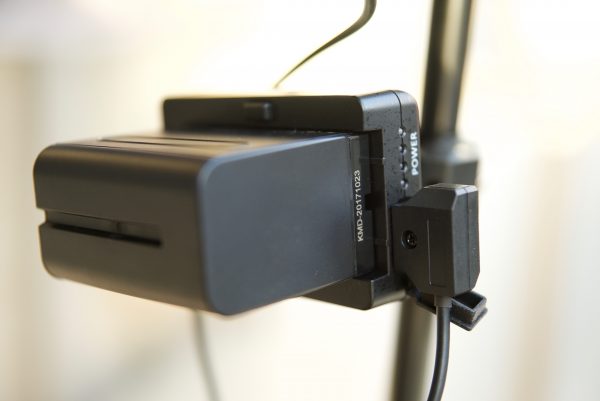
Not only do you get a battery and a charger, but also a power plate with an attachment that lets you mount it on a light stand. What I like about the power plate is that it uses a D-tap connector at one end which makes it really easy to also run the light off a camera or a camera battery that has a D-tap output.
The other little neat trick is that the light can also be powered off a USB (5V-2A) power bank. This is a really clever feature, but you do need to be aware that the lights output will be reduced by a 1/4 if you are powering it this way. A 25% drop in output is a small price to pay for this added flexibility.
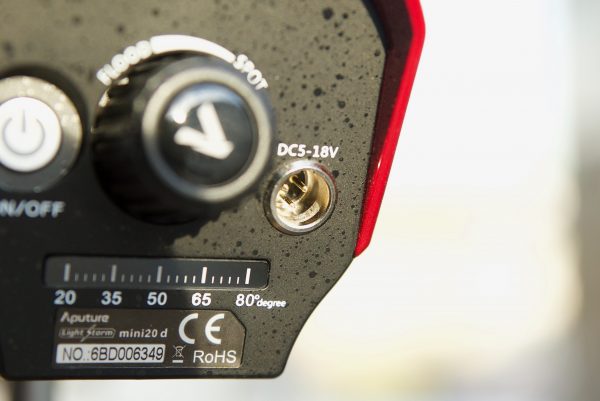
The light can also be powered off mains power through its 5v-18v port.
Aputure gives you everything but the kitchen sink
No one can ever accuse Aputure of not providing good value for money. Whatever you may think of their lights, there probably isn’t another lighting company around that gives you as many accessories for free as they do. The LS-mini20 d comes with:
LS-mini20 d Light Fixture
NP-F970Battery
Battery adapter
5500K Filter
Clamp
Universal cold shoe ballhead mount
3200K Filter
AC-DC adapter
Charger
Crab clamp
Power cable
USB Type-A to XLR
D-Tap to XLR
Plug
Warranty card
Product manual
Mounting points
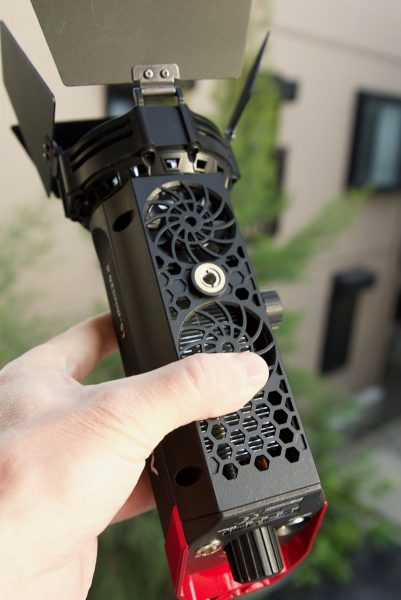
The light has a single 1/4 20″ mounting point on the bottom of the fixture. Unfortunately, the light doesn’t come with any sort of yolk frame so you have to attach it to the universal cold shoe ballhead mount if you need to adjust the direction of the light. This cold shoe ballhead mount is a little too small for a fixture of this size in my opinion. In saying that, it does hold the weight and it is perfectly usable, but I worry how long it would last before it breaks.
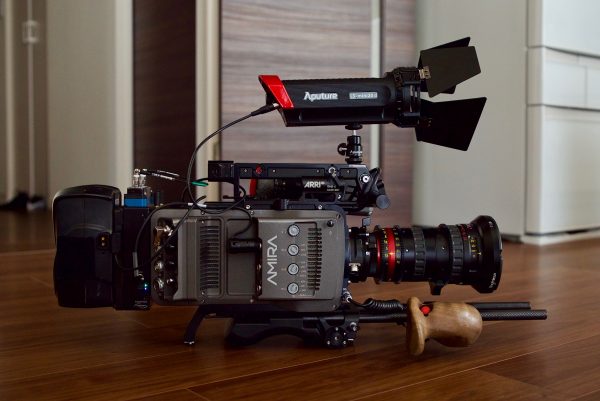
The size and weight of the LS-mini20 d and the fact it can be run off a USB power bank or D-tap makes it suitable as an on-camera light if needed. You can quickly attach it to a cold shoe mount or a monitor arm etc. and you are good to go.
Fan-tastic?
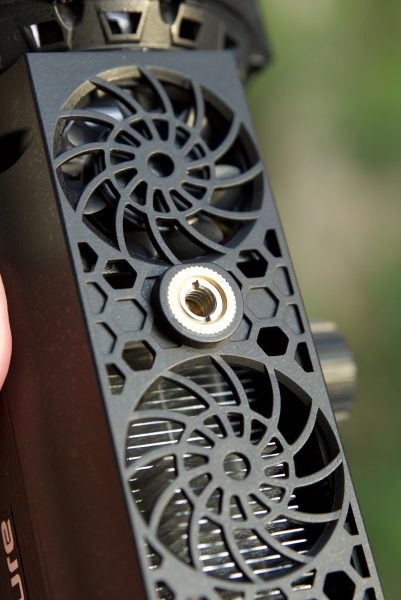
The LS-mini20 d used COB (chip on board) technology and while this is a very efficient way of using LEDs it does create heat. The LS-mini20 d has a fan underneath that helps disperse the heat, but here’s the problem. It doesn’t come on straight away so you get an illusion that the light is really quiet. When the light reaches a certain temperature the fan just comes on, and if you are in the middle of an interview you may suddenly find that the noise it is making becomes noticeable. Given the fact that these aren’t super powerful lights, if you are using them for an interview, you are going to have to have them fairly close to your talent when used in the full flood position.
Options
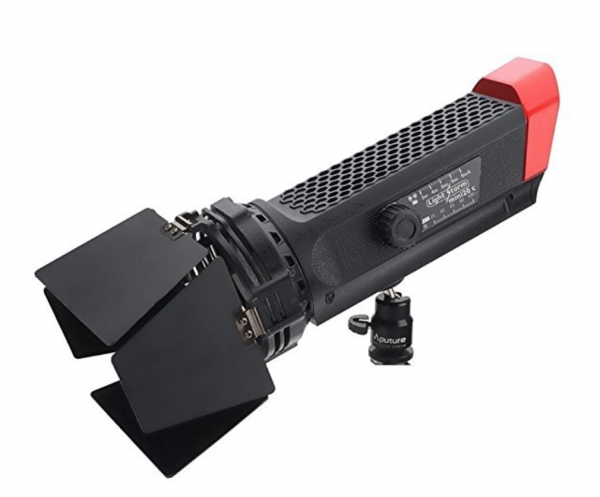
Not only does Aputure have the LS-mini20 d, but they also sell the LS-mini20 c. The LS-mini20 c is a 3200-6500K colour adjustable fixture. While it has the added advantage of being colour adjustable, it comes at the expense of output.
Output
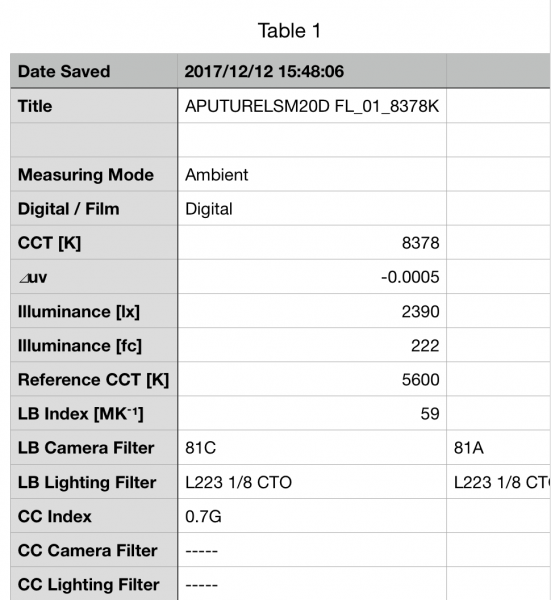
The LS-mini20 d, when tested at a distance of 1m (3.28ft) in its full flood position (80 degrees) using the Sekonic C-700 recorded an output of 2390lx or 22fc. This was higher than the 1800lx specified by the manufacturer. The Kelvin colour temperature recorded was 8378K, which was considerably cooler than its listed 7500K (+/-300K) specification.
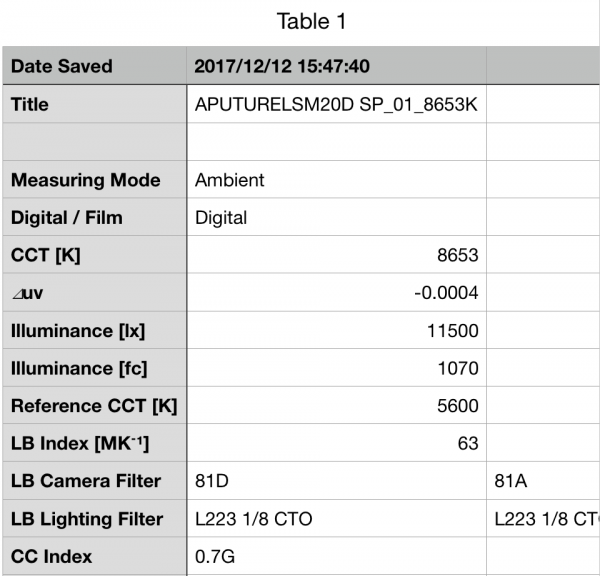
Above you can see that in its full spot position (20 degrees) the light recorded an output of 11500lx or 1070fc. This was higher than the claimed 10000lx specified by the manufacturer. The Kelvin colour temperature recorded was 8653K, which was more than 1000K higher than its listed 7500K (+/-300K) specification.
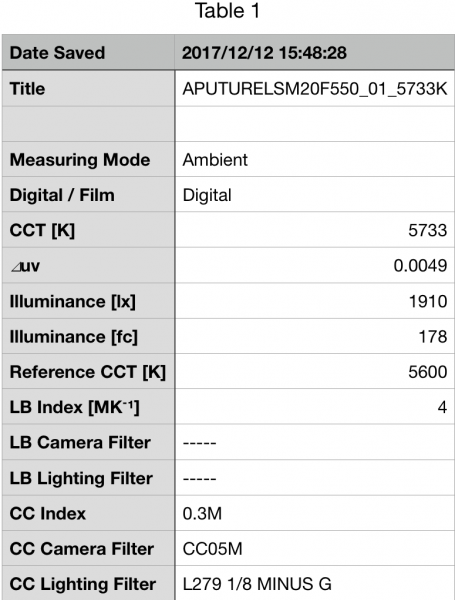
I also tested the light with its included 5500K filter to see how that effected the output as well as the kelvin colour temperature. Above you can see that the light in its full flood position had an output of 1910lx or 178fc. Surprisingly this wasn’t as big of a drop off in output as I was expecting. With the 5500K filter the LS-mini20 d recorded a kelvin colour temperature of 5733K.
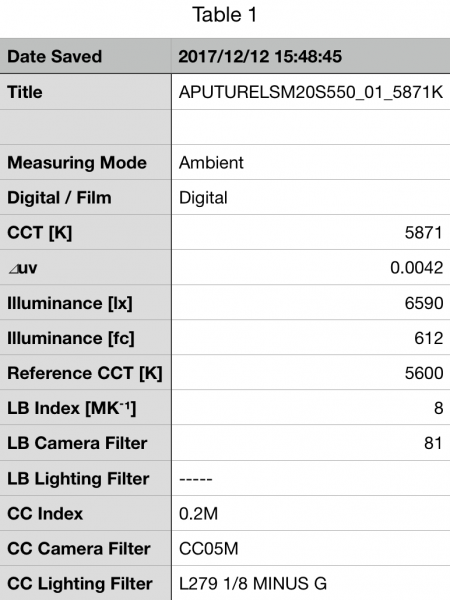
Above you can see the results when testing the light with its 5500K filter in the full spot position. The light recorded an output of 6590lx which was considerably less than the light’s output of 11500lx without the filter. With the 5500K filter, the LS-mini20 d recorded a Kelvin colour temperature of 5871K.
It was interesting to see that the lights Kelvin colour temperature was more accurate when using the 5500K than when using it in its default 7500K (+/-300K) mode. Hard to explain this one! Usually a light is more Kelvin colour temperature accurate when tested without a CTO or other type of filter that alters the lights kelvin temperature.
When I tested the light with both the 5500K and 3200K filters together (this is the only way to get a Kelvin colour temperature under 4000K) the output in the full spot position dropped to just 2260lx. In the full flood position, this dropped to a dismal 490lx. Unfortunatel, you can’t really use this light in this tungsten configuration as the output is just way too low.
Colour rendering
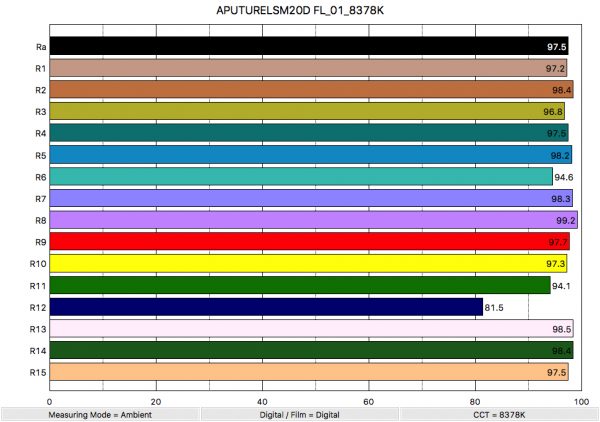
We have seen how much output the light is capable of and what kelvin colour temperature it produces, but just how colour accurate is it? Again I used the Sekonic C-700 to find out. Above you can see that the LS-mini20 d in its full flood position recorded an average CRI (R1-R8) of 97.5 and an extended CRI (R1-R15) of 96.34. For replicating skin tones accurately the light recorded 97.7 for R9 (red), 98.8 for R13 (closest to caucasian skin tones), and 97.5 for R15 (closest to Asian skin tones). The numbers are all good and are in line with the manufacturers claims.
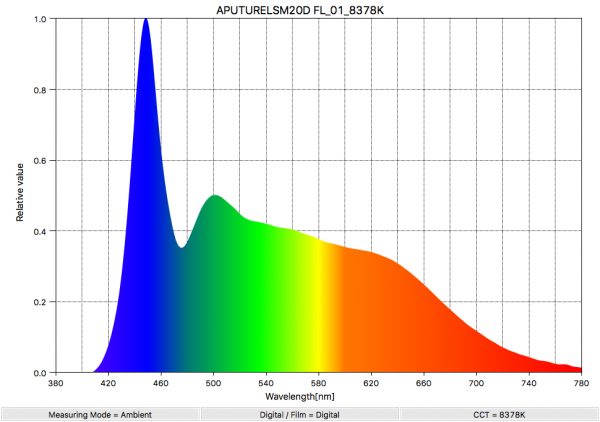
Above you can see the spectral distribution of the light in its full flood position. The light does have a small green spike, but generally it has a good, even spread across the spectrum for a LED light.
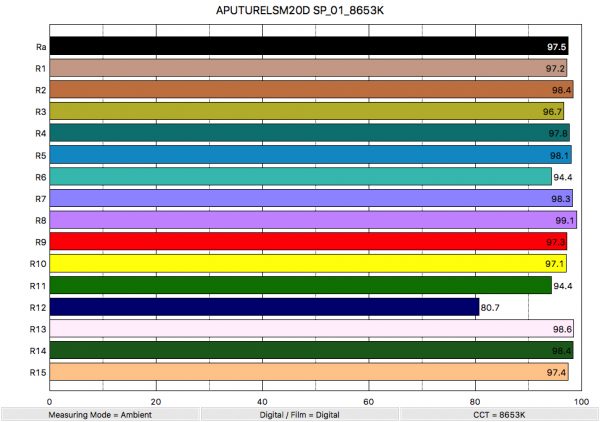
Above you can see that the LS-mini20 d in its full spot position recorded an average CRI (R1-R8) of 97.5 and an extended CRI (R1-R15) of 96.26. For replicating skin tones accurately the light recorded 97.3 for R9 (red), 98.6 for R13 (closest to caucasian skin tones), and 97.4 for R15 (closest to Asian skin tones). The numbers are all good and are in line with the manufacturers claims.
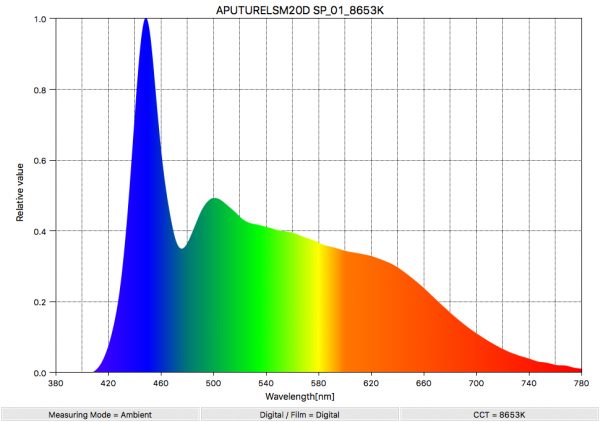
Above you can see the spectral distribution of the light in its full spot position. The light does have a small green spike, but generally it has a good, even spread across the spectrum for a LED light. The results were almost identical to those of when the light was set in its full flood position, which is what should be the case.
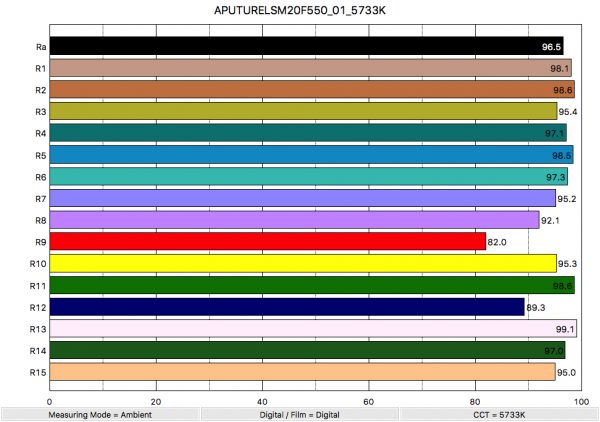
When using the included 5500K filter in its full flood position you can see above that the light recorded an average CRI (R1-R8) of 96.5 and an extended CRI (R1-R15) of 95.24. For replicating skin tones accurately the light recorded 82.0 for R9 (red), 99.1 for R13 (closest to caucasian skin tones), and 95.0 for R15 (closest to Asian skin tones). The numbers are all fairly good and are in line with the manufacturers claims.
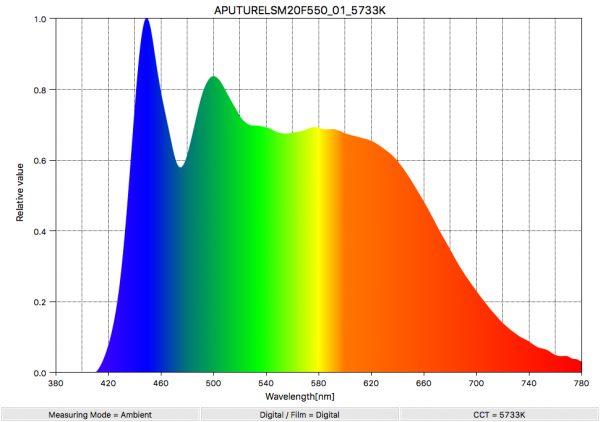
Above you can see the spectral distribution of the light in its full flood position using the 5500K filter. The light does have a larger green spike than when tested without the filter, and you can see that the spectral distribution of colours isn’t as smooth either. In saying that it is still fairly good for a LED light.
Quality of the light
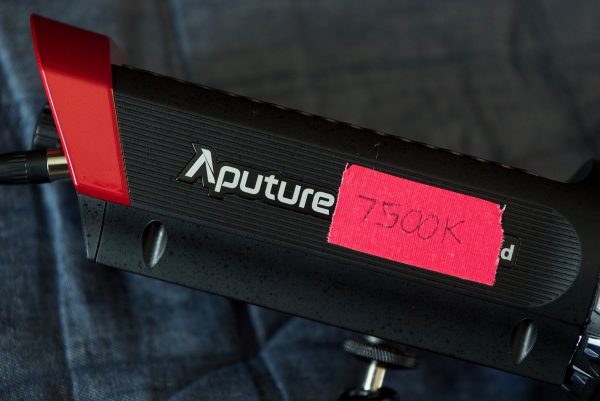
When using the LS-mini20 d I always had to keep in the back of my mind that it isn’t a 5600K light. It is quite easy to forgot this when you are in a hurry as no where on the light is the kelvin colour temperature listed. I ended up putting a piece of tape on the side of the light and writing down the 7500K colour temperature.
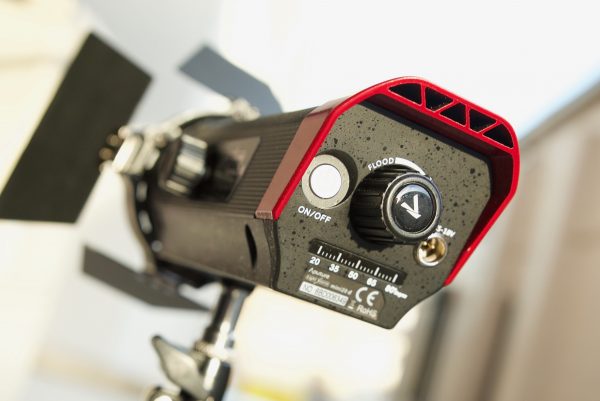
There’s nothing wrong with using a 7500K fixture, and in certain situations a really cold light source can add a nice amount of colour contrast between your foreground and background. I do however think, that the majority of people who are going to buy this light want to use it more as a 5600K source, and that’s the main problem I have with this light. It’s one thing to have good colour rendering scores and a good output given its power draw, but the fact that it does all this at 7500K and not 5600K (without using the filter) is a head scratcher. Having to use a filter greatly reduces the lights output (particularly in the spot position).
The quality of the light is still good given the price point, and despite the qualms I may have, it’s still capable of producing fairly good results. While it may not have the tightest beam angle, the fact that it can go out to a fairly wide 80 degree beam angle certainly makes it an intriguing option for filmmakers on a budget.
Competition
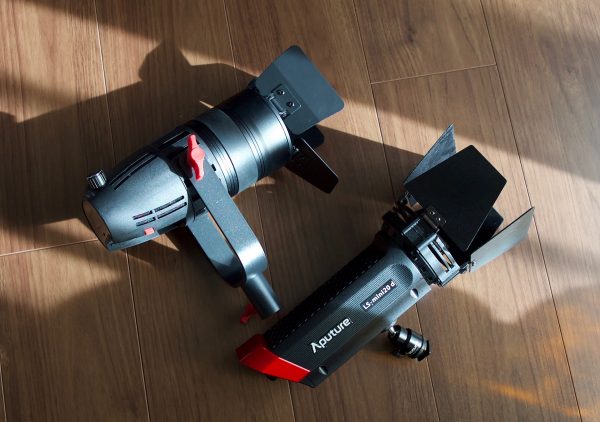
At $234 USD the lights direct competition comes in the form of the CAME-TV Boltzen 30W. The Boltzen retails for $258 USD. So how do the two compare?
Weight
Aputure LS-mini20 d: 680g (23.98oz)
CAME-TV Boltzen 30W: 970g (34.21oz)
Beam angle
Aputure LS-mini20 d: 20-80 degrees
CAME-TV Boltzen 30W: 16-60 degrees
Output
Aputure LS-mini20 d full flood 5500K filter: 2390lx
CAME-TV Boltzen 30W full flood: 3930lx
Aputure LS-mini20 d full spot 5500K filter: 6590LX
CAME-TV Boltzen 30W full spot: 17000lx
Extended CRI (R1-R15)
Aputure LS-mini20 d full flood 5500K filter: 95.24
CAME-TV Boltzen 30W full flood: 94.84
Kelvin colour temperature
Aputure LS-mini20 d full flood 5500K filter: 5871K
CAME-TV Boltzen 30W full flood: 5757K
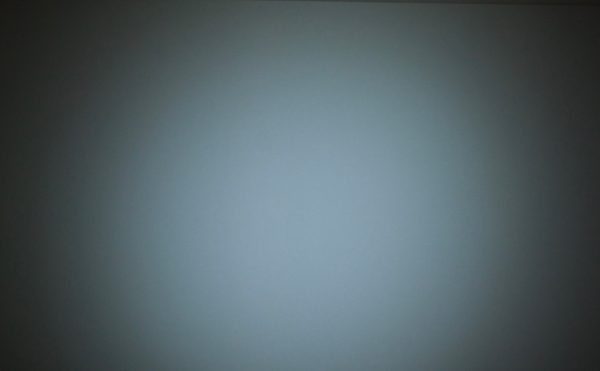
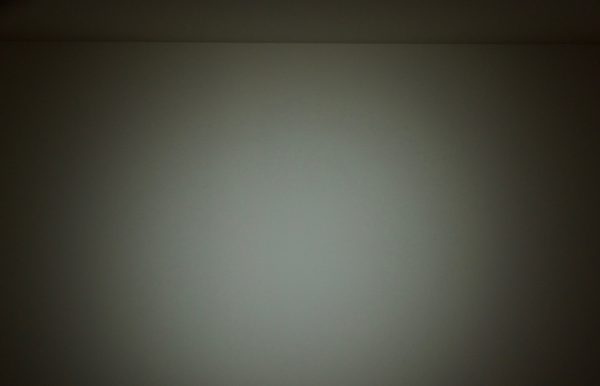
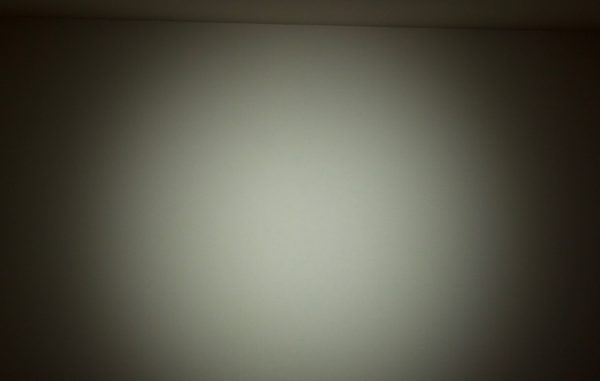
Above you can see just how the two lights look in their full spot positions when the camera was white balanced to 5600K. You can see just how cold the Aputure LS-mini20 d looks when you don’t use the 5500K filter. When you do use the 5500K filter you can see the reduction in output quite clearly. If you look at the CAME-TV Boltzen 30W its beam angle is a little tighter and it has noticeably more output than the LS-mini20 d. Both the CAME-TV and the Aputure display colour fringes on the edges of their beam, with the LS-mini20 d showing slightly more.
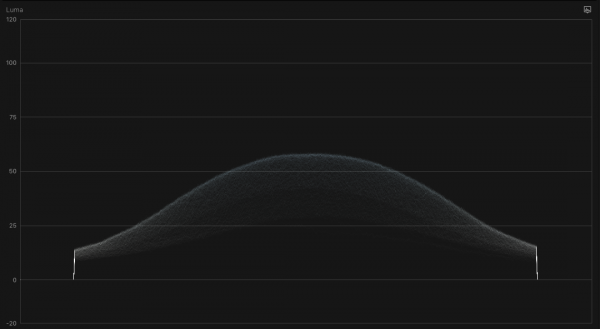
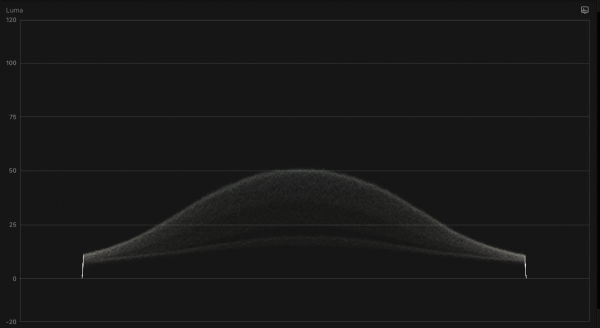
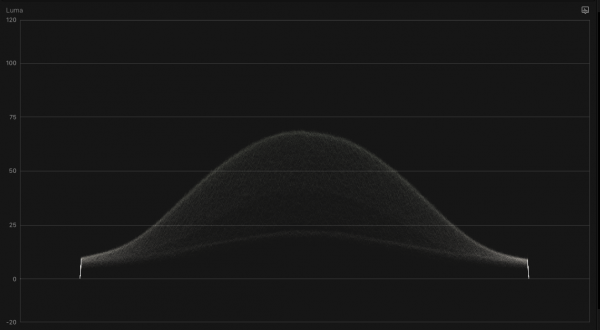
Despite having more output, the CAME-TV does have a harsher fall off and it isn’t nearly as linear as the Aputure LS-mini20 d. Above you can see luminance charts for the Aputure and CAME-TV that clearly show these differences.

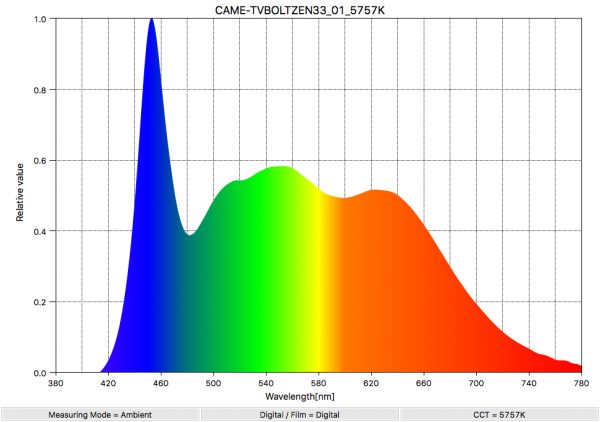
Above you can see the spectral distribution of both lights. The CAME-TV doesn’t have the pronounced green spike of the Aputure, but it does have a few more dips across the spectrum.
Is the Aputure LS-mini20 d worth considering?
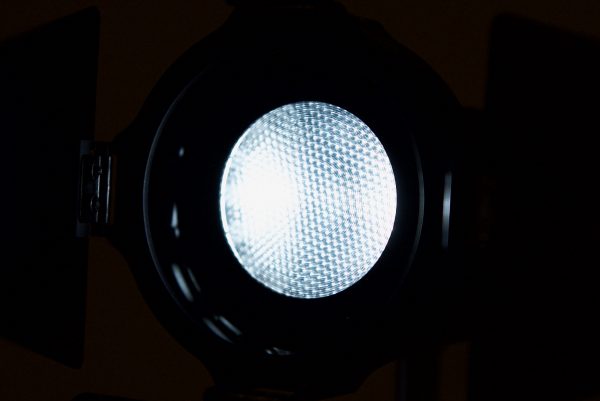
In some ways the LS-mini20 d is a square peg trying to go into a round hole. It’s certainly unconventional and the 7500K base kelvin colour temperature is probably the main reason why. Despite this the light still offers good performance for the relatively low amount of money you need to shell out. Aputure give you a ton of accessories, powering options, and the ability to use the light at 7500K, 5500K or even 3200K, for a daylight only fixture sounds impressive. Unfortunately the reality of running the light at anything other that 7500K is a different story. The output reduction when running the light using the 5500K filter is a deal breaker for me, and running the light as a tungsten source results in almost unusable low output.
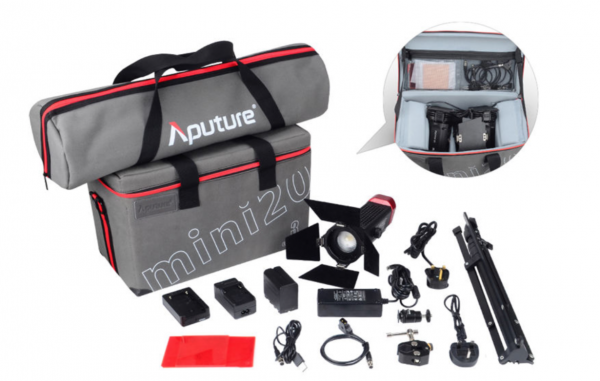
It’s lightweight and travel friendly and the fact that you can buy a three light LS-mini20 flight kit for $719 USD makes it a very compelling option for VJs or shooters who are on a tight budget. For $719 USD you get:
1 x LS-mini20 d (7500K)
2 x LS-Mini20c (3200-6500K)
3 x NP-F970 Battery (7200mAh)
3 x Battery adapter
2 x 5500K Filter
3 x Universal cold shoe mount
3 x light stands
3 x 3200K Filter
3 x AC-DC adapter
3 x Charger
3 x Crab clamp
3 x Power cable
3 x USB Type-A to XLR
3 x D-Tap to XLR
1 x Padded Kit Case
3 x Stand Case
3 x Warranty card
3 x Product manual
Look, is it the best portable LED fresnel available, no, it’s far from it. There are way better options if you are looking for output, overall build quality and quality of light, but apart from the CAME-TV Boltzen 30W, not at this price.
The light is certainly versatile and with its low weight you could easily use it as an all in one lighting solution if you wanted to carry around just one light.
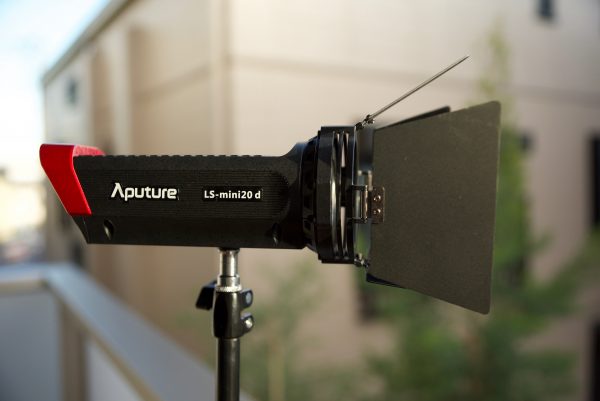
I’m in two minds about this light. On one hand you get a ton of accessories and versatility, but on the other it’s at the expense of build quality and performance. For me personally I would of preferred to have seen Aputure make a better light than including so many accessories. Don’t get me wrong, included accessories that you don’t have to pay for are great, but they should never be a substitute for the overall quality of the main product you are selling.
Aputure make some great lights, but the Aputure LS-mini20 d leaves me feeling a little flat. If you are a VJ or on a budget I think it’s definitely worth considering. For value for money, it’s hard to top, but if you care more about build quality and output, something like the CAME-TV Boltzen 30W is probably a better option.
You have probably heard the expression “Don’t put all your eggs in the one basket”, well that’s exactly what Aputure have done. By giving you so much, they have ultimately had to break a few eggs along the way.



